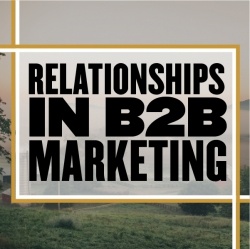 Article
Article
Zhang, Jonathan, Watson IV, George, Palmatier, Robert, and Dant, Rajiv (2016). “Dynamic Relationship Marketing.” Journal of Marketing, 80(9), 53-75.
Reviewer
Dr. Scott Downey, Associate Director and Professor
Summary
Relationships are important in business-to-business marketing, but defining what is meant by “relationship” is difficult. These authors looked at different strategies for relationships across 552 buyer-seller pairs, considering level of commitment, trust, dependence, and relational norms. Relationships move through three positive (exploration, endowment, recovery) and two negative (neglect, betrayal) migration mechanisms. The authors also considered what strategies helped the relationship move to higher positive states and avoid negative ones.
What this means for food and agribusinesses
This was a really cool study and has important implications as it really provides a how-to. First, some further definition: “Relationships” between buyers and sellers start out as transactional. While a measure of trust is necessary for a transaction, commitments and dependence are low. So, relationships begin as transactional. As the relationship grows, the buyer and seller explore possibilities and get to know one another better. This happens through a transitional phase. At the next level, the relationship blooms to one that is what most of us might refer to as a partnership. The authors describe that as a communal relationship. This is where both parties invest in the relationship, which is referred to as endowment.
Not everything goes perfectly in relationships, so when a relationship has been damaged, there is effort to repair that damage. At that time, the relationship is said to be in recovery.
These three states–exploration, endowment, and recovery–are all positive phases of the relationship, but there are two negative phases as well. After exploration, it could be that one or both parties does not invest in the relationship, even though purchasing may continue. This is a phase where the relationship transitions back to transactional through neglect. This can also be caused by some negative factor. A betrayal of the written or unwritten terms of the relationship can move the relationship into a damaged status. Neglect and betrayal are the two negative phases.
Relationships are not set in stone. They change over time and move back and forth through these various phases. Here’s where it gets really interesting, though. The authors looked at five factors or tools that could facilitate movement between the different phases. They aren’t all within control of the seller. Some investments are on the part of the buyer too. The tools they considered are communication, product mix (what economists might refer to as “utility” – it captures concepts of both value and fit), investment by the seller, investment by the buyer, and compromise. The authors wanted to know how much each of these factors would contribute to movement between states. Some of the results are intuitive, some not so much.
To move customers from transactional to transitional states requires communication and product mix. No big surprise there. We have to have good communication, value, and knowledge of how that value fits the customer in order for relationships to be explored. But to move to the next phase requires investment by both parties. More than communication, products, or compromise, both parties must be willing to contribute something to the good of the other to reach the communal or partnership state of the relationship. Recovery is nearly all up to the customer. They have to be willing first, to compromise, then invest (want to help the seller), and not much else matters. The seller’s communication during recovery is important, but only about half as important as the customer’s investment and willingness to compromise. No amount of product or investment from the seller will have much impact at all.
For the negative phases of the relationship, the authors consider communication and investment by the buyer and seller, but also consider conflict and sense of injustice. It seems neglect occurs mostly because the seller starves the relationship or reduces levels of communication. The customer might also starve the relationship by limiting the investment they are willing to make. Betrayal is a bigger deal when the relationship is in transition than when the relationship is considered communal (or partnership). The primary drivers of betrayal are injustice more than conflict, though both are negatives.
The most significant implication for sellers in food and agricultural businesses are that we can have a more measured approach to what we consider a “relationship.” One of the ways to do that is to track things like how well we are able to anticipate that value we propose is a good fit for the customer, look at how frequently we communicate with them, and how frequently they communicate with us, because that is considered an investment in the relationship. If the customer helps us out with something, that is a significant milestone. If the customer typically communicates a lot and then begins reducing that, it could be that the relationship is moving to a neglect phase. Intentionally communicating or even asking the customer to do something to help us can lift that relationship back to a positive standing.
These changes are likely to be subtle though. Sellers will have to work to observe subtle changes over time. Many salespeople are really good at observing subtleties in customer behavior in the moment, but may not be as good at tracking those changes over time. This is yet another instance where writing things down can be useful. Take those five factors: communication, product value/fit, seller investment, buyer investment, and buyer compromise, and create a dashboard where that gets measured a few times a year, even subjectively. This will allow us to make sure we keep relationships with desired customers as true partnerships.




